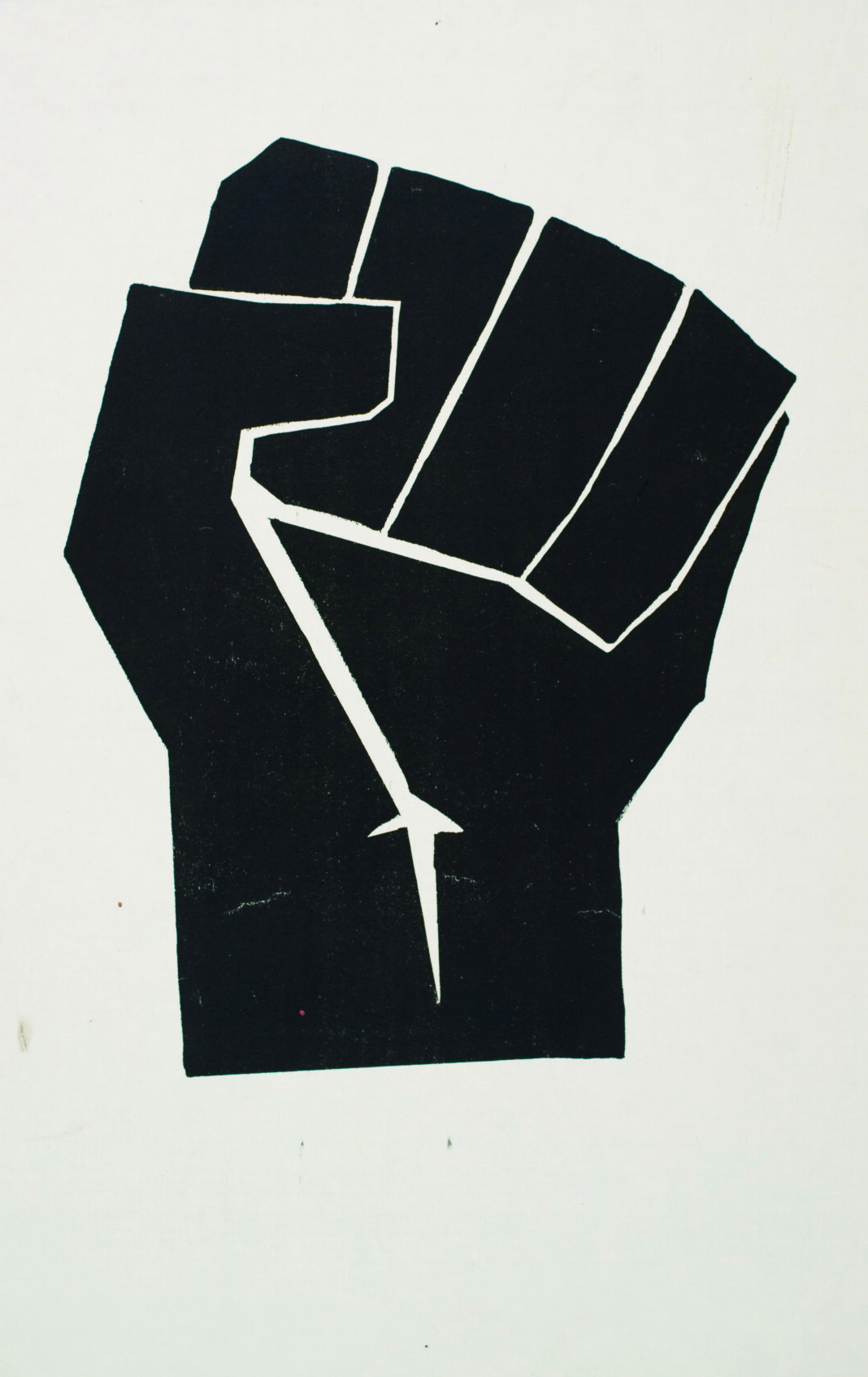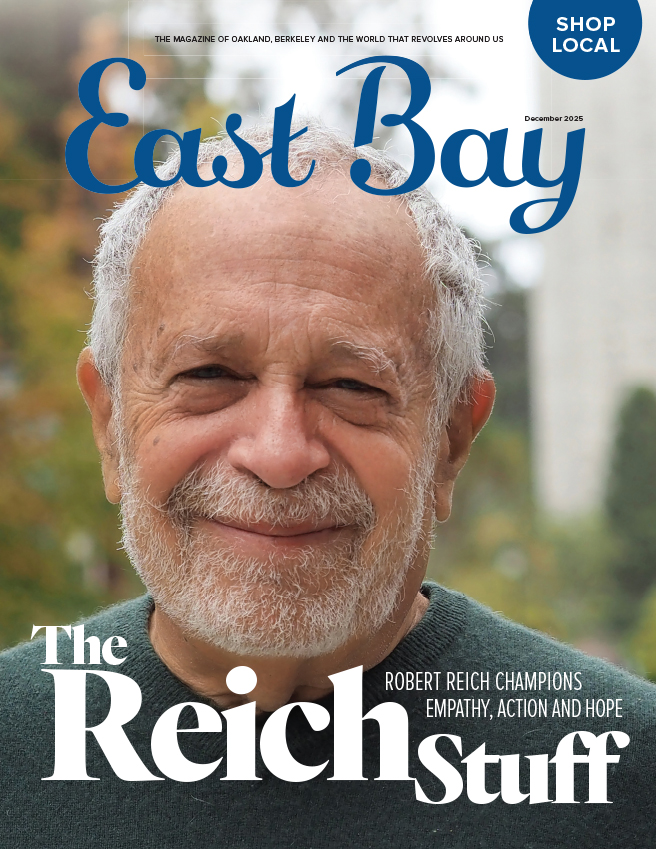As Alabama State students, my parents were very active during the Civil Rights Movement. Not only did they march, boycott and attend the churches where King gave his famous speeches, they also bore witness as Stokely Carmichael, later known as Kwame Ture, succeeded John Lewis at the helm of The Student Nonviolent Coordinating Committee and re-animated the term “Black Power,” first coined by Richard Wright. My mother was working in Watts as a probation officer during the 1965 riots, and my father helped take over the administration building at Howard University just months before I was born.
Being a “Black Power baby,” I began to dig into the books, memorabilia and ephemera my parents, as organizers and protesters, collected at a very early age. On one occasion—I must have been around seven or eight—I came across a huge poster of what appeared to be my dad during that era.
“Why would daddy have a big poster of himself?” I remember asking my mother.
“That’s Malcom X,” my mom replied. “Your father used to emulate him in so many ways.”
That was the day that I learned who Malcom X was, and how much he looked like my father. Not only did my mom tell me who he was, but she gave me a kid-sized synopsis of The Autobiography of Malcolm X and told me that Alex Hailey, the author of the book Roots, which was an ABC television series at the time, wrote it. My initial understanding of my parent’s lives as protestors and activists began visually, like this, with me coming to them with a poster or a pin and a question.
A rather obscure art form in the digital age, posters of protest and resistance have always had a pedagogical purpose. They provide people who are not necessarily intellectually engaged with politics or protest a window into the times. From the 1950s until at least the early ’70s, posters were used as alternative media to champion the protests for equality, justice and representation that the mainstream news outlets didn’t cover.
Oakland Museum of California has collected many of these visual salvos in their online “All Of Us Or None” archive project. Started by Free Speech Movement–activist Michael Rossman in 1977, the archive gathers posters of modern movements in the United States. It focuses on the domestic political poster renaissance that began in 1965 and continues to this day. When Rossman died on May 12, 2008, his family donated the collection to the museum.
“We were approached by Michael Rossman’s family through an intermediary, Lincoln Cushing,” said Renee De Guzman, senior curator of art for OMCA. “We negotiated the acquisition of the whole ‘All Of Us Or None’ collection with the stipulation that the posters come completely digitalized. We found support to catalogue the collection and made it accessible online as completely and quickly as possible. The ‘All Of Us Or None’ collection, I believe, has enormous value as material evidence of historic efforts for political change and populist cultural expressions.”
The Archive contains posters from every aspect of progressive activity: movements of protest, liberation and affirmative action; trade union and community struggles; electoral and environmental organizing; community services; and visionary manifestos. It is strongest in works from the San Francisco Bay Area, but its scope is national: approximately one-quarter of its holdings come from out of state, primarily New York City, Boston, Chicago and Washington, D.C. These are complemented by a representation of international works. The collection consists of approximately 24,500 distinct titles.
“The collection is searchable,” De Guzman said. “Rather than any one poster, I’d refer you to search under ‘gay,’ since it is the 50th anniversary of Pride this month. This will show how comprehensive the collection is on a wide range of communities and stories. I also appreciate that Michael Rossman collected material culture without any obvious political intent, such as the Tom of Finland drawings.”
The online exhibition includes well-known graphic artists such as Malaquías Montoya, Emory Douglas, Rachael Romero, Rupert Garcia, Yolanda Lopez, Favianna Rodriguez, Carlos Cortez, Nancy Hom, Juan Fuentes and Jos Sances, with pieces from collective workshops such as La Raza Silkscreen, the Royal Chicano Air Force, Japantown Art and Media, Kearny Street Workshop and Inkworks Press.
“One of my favorite posters, appropriate to the present painful moment, is the panther image that came from voter organizing by SNCC in Lowndes County, Alabama,” De Guzman said. “The symbol connects the Panthers to the formal Civil Rights Movement and shows that the ballot was as important as the gun. I showed it in our ‘All Power to the People: Black Panthers at 50.’ Not only is it graphically fantastic, it is potent and meaningful.”
Printmaker and sculptor Elizabeth Cattlet’s “Black Is Beautiful” comes from a time, not long ago, when the phrase was considered controversial. The phrase itself was coined by writer and advertiser, Bill Allen, in the 1950s urging Black consumers to stand against products such as skin-lighteners and hair-straighteners, and allow their natural beauty to become the standard in the community. Catlett’s 1972 poster illustrates both how that struggle continued and how the scope of the phrase widened to include the Black Power Movement.
In the 1960s and 1970s, the Indian Health Service (IHS) and collaborating physicians consistently performed sterilizations on Indigenous women, in many cases without informed consent. In 1976, a U.S General Accountability Office (GAO) investigation found several Indian Health Service areas not in compliance with IHS policies concerning consent to sterilization. The investigation found that these four service areas sterilized 3,406 women between the years 1973 and 1976; 36 of those cases were women under the age of 21. This 1974 poster from The People’s Press informed indigenous women of the danger in a way no other medium at the time could have. [1]
Though Stokely Carmichael did reanimate the term “Black Power,” via Richard Wright, the raised black fist often associated with the term has a long and storied history all its own. It was the logo for the Industrial Workers of the World in the early 1900s. And it was known as “The Popular Front Salute” used by anti-fascists during the Spanish Civil War. In the 1940s and 1950s, it moved on to revolutionary causes in Mexico, popularized by the revolutionary print collective Taller de Gráfica Popular (The People’s Graphic Workshop), of which Elizabeth Catlett was a member. Not until the 1960s, when artist and activist Frank Cieciorka produced the familiar, simplified version for SNCC, did the raised fist become a symbol for not only the The Black Power Movement, but for the Students For a Democratic Society as well.
The visual communication of the fist has been misinterpreted to mean that it promotes violence, but its wisdom is as old as civilization itself and has been passed down to oppressed people since the invention of language: One finger out of five is weak, but when banded together, they are made strong.
Covid-19 has exposed, in high and stark contrast, the inequities in our current systems, bringing with it both an awakening to old oppressions and the discovery of new ones concerning access to healthcare services and the overwhelming numbers of Black and Brown people who make up the essential workforce in this country. Sparked by the deaths of George Floyd and Breonna Taylor at the hands of police acting with no accountability, the largest global protests in modern history have occurred in the face of oppressive forces, signaling civil war and ravaging cities.
Oakland’s streets are filling up with thought-provoking, informative and breath-taking murals that visually illuminate an urban landscape scarred by fear, rage and police brutality. Just as with Occupy Oakland nearly a decade ago, the call for the preservation of the art of protest has sprung anew as a new generation of artists and print-makers take the forefront in a world where the digital, corporate world threatens their existence.
The “All Of Us Or None” poster collection illustrates how resistance to oppression, organizing for the betterment of all people and celebrating the differences between us are part of the fabric of this country, and make the world a better place. These posters illustrate this constant, beautiful struggle. They also show how much we have achieved, reminding us that the fight is always worth it.
The poster in question isn’t actually mentioned anywhere: I think this paragraph is missing its first (introductory) sentence.











